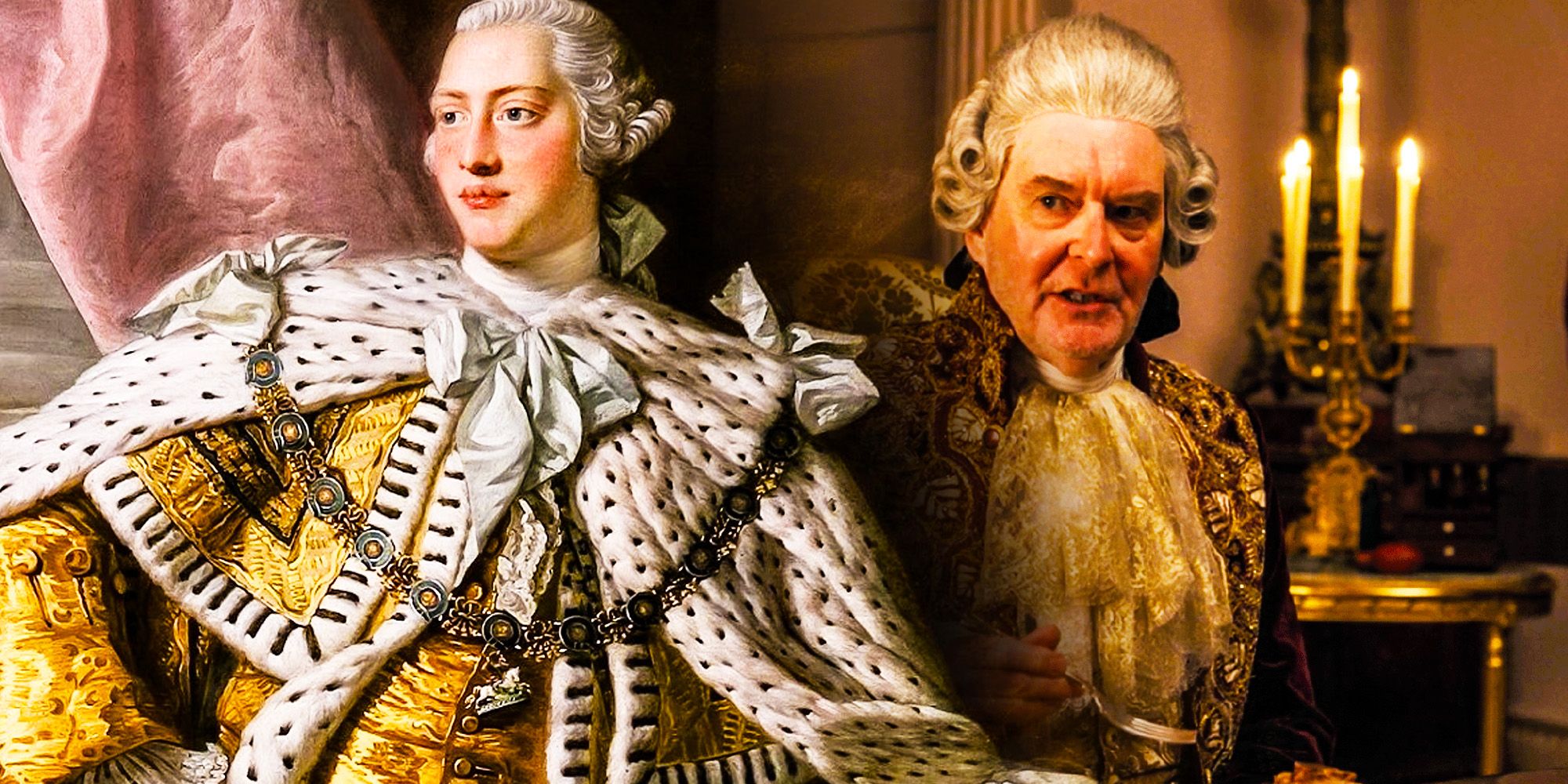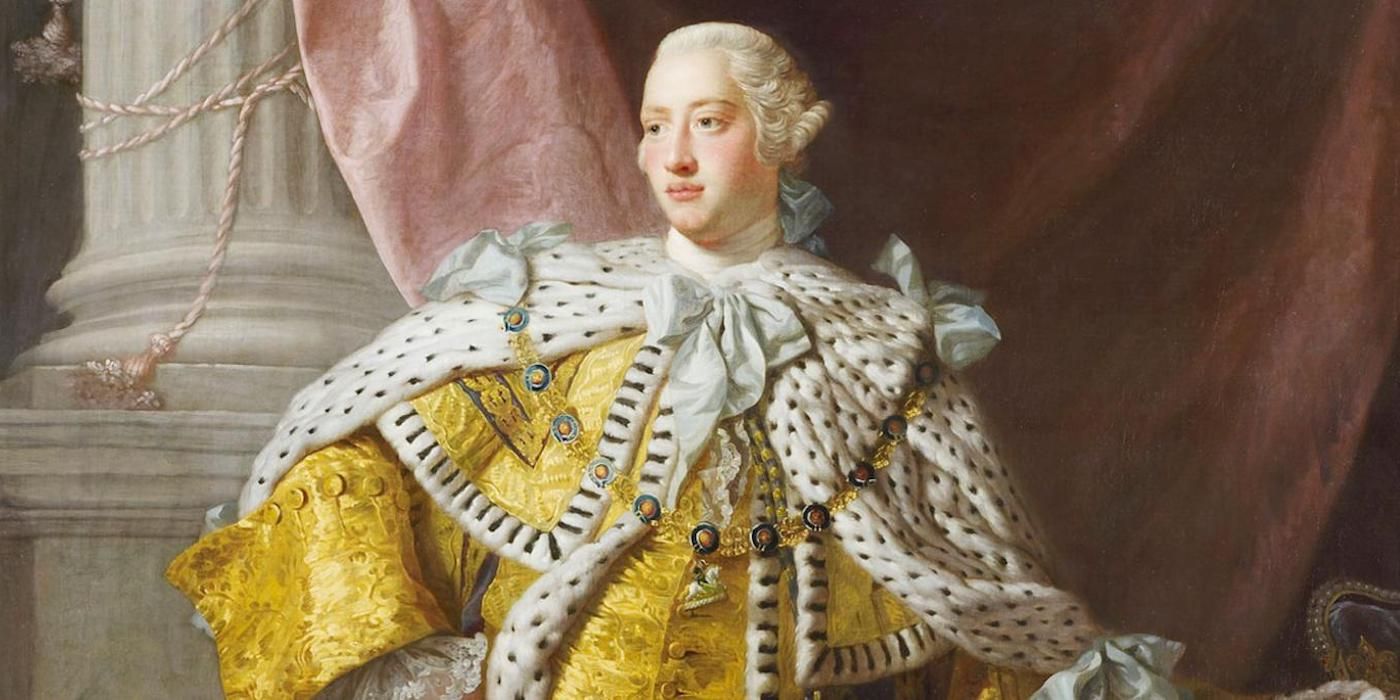Netflix's Bridgerton season 2 sees Queen Charlotte deal with her husband's mysterious condition in more detail, but what exactly was the true story behind King George III's illness? First released on March 25th, 2022, Bridgerton season 2 debuted on Netflix to another record-breaking premiere, with Netflix and Shondaland subsequently announcing Queen Charlotte will get her own spin-off. Yet despite Bridgerton's rampant success and ever-burgeoning canon, little has been explained about her oft-absent husband, King George (James Fleet).
Set in the early 1800s, Bridgerton exists in a fictionalized Victorian-era England under the rule of King George III and his wife, Queen Charlotte (Golda Rosheuvel). Appearing in only three Bridgerton episodes to date, the king is first seen in season 1, episode 5, at dinner with the Queen. During their conversation, it becomes clear that the king has forgotten their daughter’s death and blames his wife for the tragedy. Then, in Bridgerton season 2, the king interrupts the queen during a meeting with the Sharmas, dressed in only his bedclothes while insistent on the idea that it is his and the queen’s wedding day.
Infamously known as the "king who lost America” (the same King George from Hamilton), King George’s illness in Bridgerton is based on a true story. There is, however, much speculation surrounding his exact diagnosis to date, with changes to King George's established life story being made as recently as 2010. Previously thought to have suffered from the condition known as Porphyria, researchers now believe King George III may have had bipolar disorder - although this hypothesis also remains up for debate.
King George’s well-documented illness was first diagnosed in 1969 (almost 150 years after his death) as Porphyria, a blood disorder known to cause anxiety, restlessness, insomnia, confusion, paranoia, and hallucinations. Yet, while history claims the king had many of those symptoms, his diagnosis was based largely on a trademark symptom of Porphyria: blue urine. In 2010, however, researchers revisited the king’s case by analyzing his handwritten letters and found two distinctly different writing styles indicative of the euphoric and depressed states associated with bipolar disorder. Furthermore, new research suggests that King George’s blue urine may not have been caused by Porphyria at all but by one of the king’s prescribed medicines which contained a flower known to cause urinary discoloration (via BBC News).
In this way, Bridgerton’s characterization of King George is supremely clever in that it incorporates symptoms from either diagnosis and never specifically names King George’s illness. When asked about her on-screen husband’s illness, Golda Rosheuvel revealed (via Insider) that the king’s illness was “never discussed” between herself and director Chris Van Dusen, but the actress notes that “back then in the 1800s, they wouldn't have known what bipolar was… The unknown of that would be terrifying, I think. The outbursts would be terrifying." And while King George is a lesser-seen character on Netflix's Bridgerton to date, his character has undoubtedly a great impact on Queen Charlotte, which is a story that might be further explored in her upcoming spin-off.


